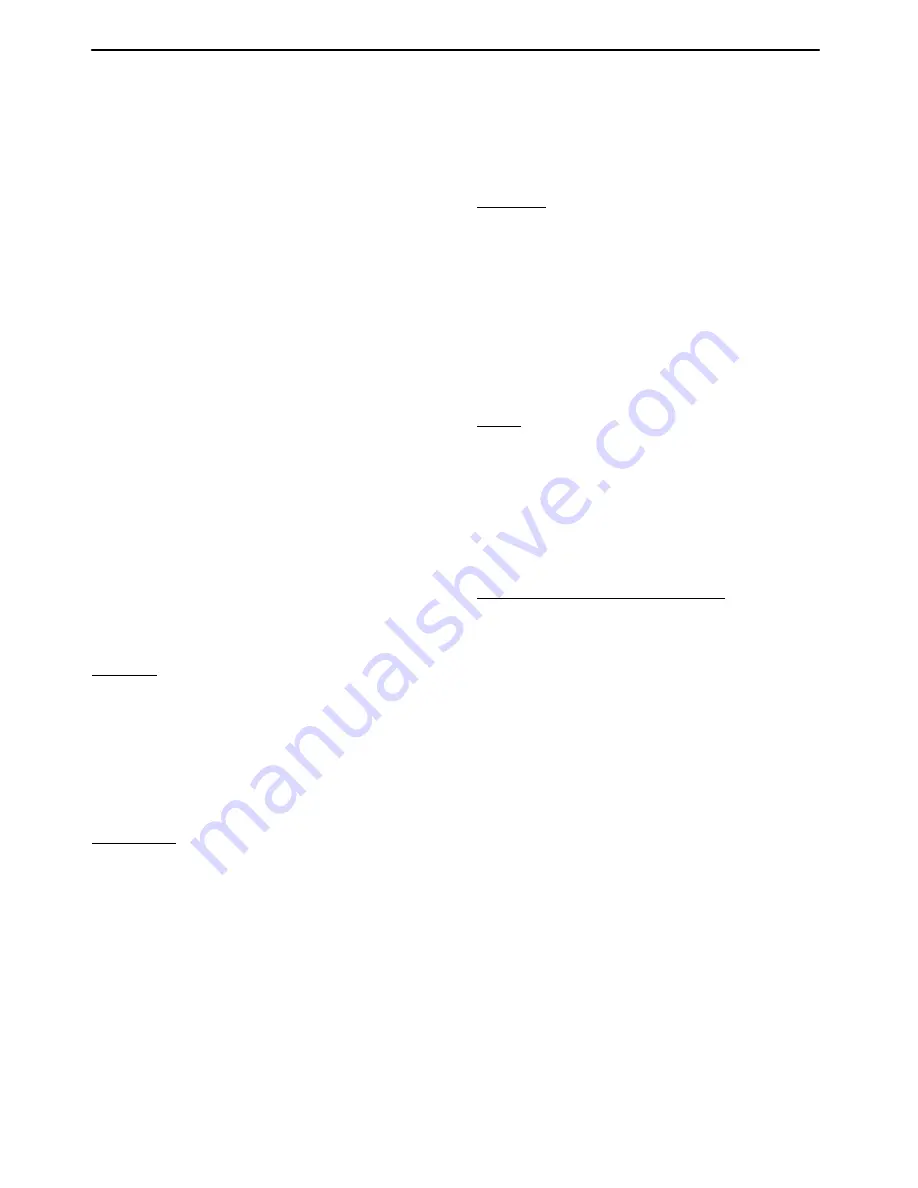
33
( )
Book 54722160 (8/02)
In the event the element is contaminated with dry dirt,
oil or greasy dirt deposits,and a new element is not
available, cleaning can be accomplished by washing,
using the air cleaner element manufacturer’s recom-
mendations.
NOTICE
To prevent damage to the element, never exceed a
maximum air pressure of 100 psi (700 kPa).
NOTICE
It is highly recommended that new replacement
elements be installed in the unit immediately in or-
der that the unit be returned to service in the short-
est possible time. In this manner, the elements
just removed for cleaning can be washed and
stored as future replacement elements.
In addition, the air cleaner system (housing and pip-
ing) should be inspected every month for any leakage
paths or inlet obstructions. Make sure the air cleaner
mounting bolts and clamps are tight. Check the air
cleaner housing for dents or damage which could lead
to a leak. Inspect the air transfer tubing from the air
cleaner to the compressor and the engine for holes.
Make sure that all clamps and flange joints are tight.
GAUGES
The instruments or gauges are essential for safety,
maximum productivity and long service life of the ma-
chine. Inspect the gauges and test any diagnostic
lamps prior to start--up. During operation observe the
gauges and any lamps for proper functioning. Refer to
Operating Controls, for the normal readings.
FUEL TANK
This unit is equipped with dual tanks that can be filled
from either side. Using clean fuel in the fuel tanks is
vitally important and every precaution should be taken
to ensure that only clean fuel is either poured or
pumped into the tank. When filling the fuel tank on this
unit, by methods other than a pump and hose, use a
CLEAN non--metallic funnel.
Every six months the drain plugs should be removed
from the tanks so that any sediment or accumulated
condensate may be drained. When replacing the
drain plugs, make sure they are tightened securely.
BATTERY
Heavy--duty, diesel cranking type batteries were in-
stalled at the factory and these should be inspected
weekly. Keep the battery posts--to--cable connections
clean, tight and lightly coated with a grease. Also the
electrolyte level in each cell should cover the top of the
plates. If necessary, top--up with clean distilled water.
TIRES
A weekly inspection is recommended. The proper in-
flation pressure for the tires is listed on General Data.
Tires that have cuts or cracks or little tread should be
repaired or replaced. Monthly check the wheel lug
nuts for tightness.
AUTOMATIC SHUTDOWN SYSTEM
The high discharge air temperature switches will re-
quire approximately 248
°
F (120
°
C) to actuate. The en-
gine coolant temperature switch will require approxi-
mately 220
°
F (104
°
C) to actuate. Replace any defec-
tive switch before continuing to operate the unit.
A low oil pressure switch may be tested by removing it
and connecting it to a source of controlled pressure
while monitoring an ohmmeter connected to the switch
terminals. As pressure is applied slowly from the con-
trolled source, the switch should close at 12 psi (.84 kgf
per cm 2) and show continuity through the contacts. As
the pressure is slowly decreased to 8 psi (0.56 kgf per
cm2) the contacts should open and the ohmmeter
should show lack of continuity (infinite ohms) through
the contacts. Replace a defective switch before con-
tinuing to operate the unit.






























